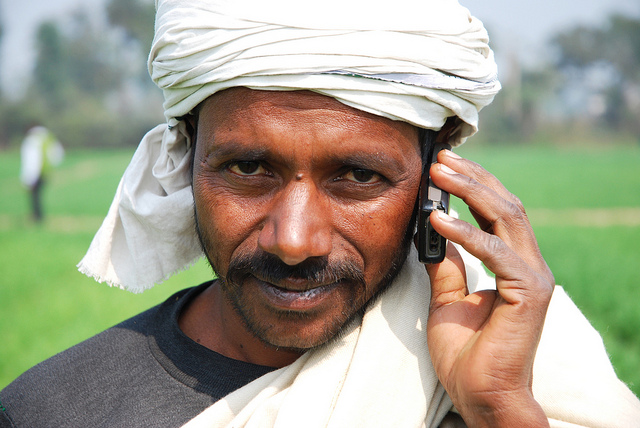A farmers’ success depends on more than good weather, healthy soil, and proper seeds. Good farming also involves a series of decisions: how much to plant each season, whether to invest in new crops, which markets to sell to. The right decisions can mean the difference between a profitable harvest and a net loss in farm income. Farmers make these decisions based on their knowledge of prevailing market prices, and supply and demand trends based on produce quality. When they lack access to up-to-date information about prices, farming conditions, and produce quality, their productivity—and profits—can suffer.
The key to filling the information gap could lie in something many of us take for granted – mobile phones. In Chapter 6 of the 2013 Global Food Policy Report, I look at how mobile phone technology can be used to connect rural farmers to markets.
Mobile phones can save farmers time and money, and maximize their profits. For example, when rural farmers want to find the market that will offer the highest price for their maize, their only option may be to travel to each market in person—a costly venture. Faced with this option, a farmer will frequently decide to sell to the nearest market or at the farmgate, missing out on potentially more lucrative opportunities. With a mobile phone, a farmer can find out the going price for his or her crop in different regional and local markets without leaving home, avoiding time-consuming and expensive travel.
Access to this technology in developing countries, however, faces two major constraints, which I call “the two Cs.” The first is connectivity. While mobile phone penetration rates in developing countries have increased markedly during the past decade, significant differences remain between urban and rural areas. One potential explanation for this access gap is cost. In many poor countries, even low-cost mobile phone services are prohibitively expensive for rural households. These high costs can stem from a lack of competition among service providers as well as a lack of adequate government regulation and investment in infrastructure.
The second constraint is content. Simply put, the information distributed through mobile phones needs to be useful to farmers, such as offering real-time market prices on the goods they’re trying to sell. In the absence of such information, farmers with cell phones may not be able to take full advantage of the technology and use it to their own benefit. Conversely, the more farmers see the value in the information they can access using mobile phones, the more willing they will be to adopt the technology and fully harness its potential.
The two Cs point to the need for cooperation among governments, development organizations, and the private sector. These players should work together to increase investment in information and communication technologies such as mobile phones and broadband connections, particularly in poor and rural areas. National governments need to ensure that this technology is affordable, through subsidies funded by private providers as in Chile and Peru, or other innovations such as universal access to broadband wireless technologies targeted to low-income users. Governments also need to provide the best possible information—on prices and produce quality as well as new agricultural techniques. If they do not, even the latest mobile technologies could have a limited impact.
With contributions from Sara Gustafson.
Related materials







